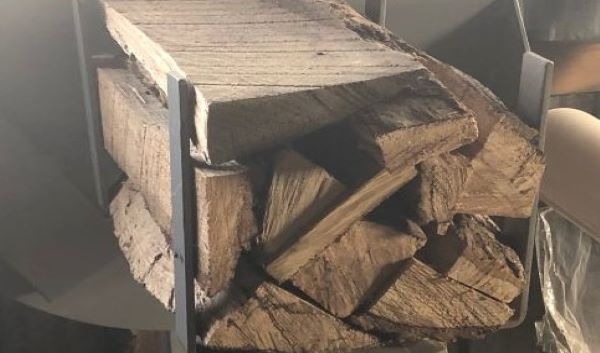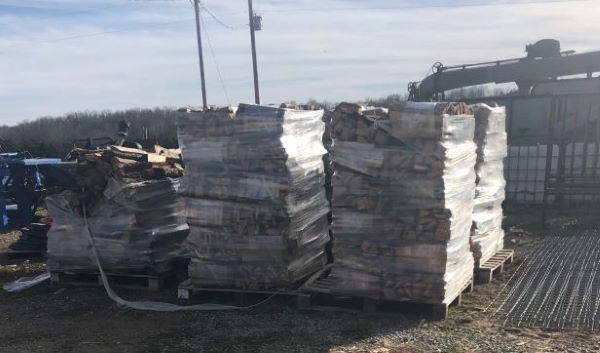About
Firewood is a great source of primary or secondary heat for homes and businesses. They can also be a good backup to a primary source like solar or electric. Firewood heat output is measured in “British Thermal Units” or BTUs. One BTU is the amount of heat needed to raise the temperature of one pound of water one degree Fahrenheit. Tree species with dense wood provide the best firewood, releasing more BTUs per volume of wood than species with less dense or lighter-weight wood. The dense wood of eastern hardwoods, such as hickory and oak, rivals coal in heat values. One ton of anthracite coal produces 26 million BTUs of heat. Hickory produces 28 million BTUs of heat per cord. One cord equals 128 cubic feet of wood (4'x4'x8'stack)
Locally sourced
There are various sawmills in the Ozarks area and the slab wood from many of these mills are burnt or shipped out of state. Some are left to waste and rot. We buy from the sawmills, so that we make firewood from their waste. This helps with conserving what God has created for us on this realm. We source these slab wood from various local sawmills and use them to make our firewood.
Availability
We can sell cords (128 cuft), wrapped (.75 cuft) and bagged firewood (.75 cuft), all of which have been air dried and kilned to USDA recommendations for indoor and outdoor use. For larger needs, we can package a pallet (~64cuft). Until our online store is up, please reach out to info@tejasbuds.com or via our fax +1 417-313-0812.


Kiln Dried
Kiln dried firewood was pioneered during the 1980s, and was later adopted extensively in Europe due to the economic and practical benefits of selling wood with a lower moisture content (with optimal moisture levels of under 20% being much easier to achieve). USDA has had treatment requirements in place firewood with their various research notes and publications since 80s as well. Our firewood reaches temperature upwards of 160ºF for 90 minutes in the kiln and stays in the kiln for less than a week, as part of the batch load. This reduces the moisture from 50% to less 15% moisture content. This then guarantees that all insects and bugs are killed and the firewood is ready to burn clean and efficiently, while still having the ability to be store in the house or close to the house, without any infestation concerns. The efficiency as seen in some testing in UK stated, 10 logs at 25% moisture content to output the same heat as 33 logs at 60% moisture content.
Some uses of our firewood
- Heating your home in a conventional wood burning stove
- Heating and cooking in a wood burning cook stove
- Oven heating in wood fired restaurants
- Restaurant and other seating with indoor fireplaces
- Camp fire both in log cabins and outdoors
- For supporting and starting large fires
References
- Denig, Wengert and Simpson. Drying Hardwood Lumber. USDA Forest Service FPL−GTR−118. September 2000
- Simpson, Boone and Chern. Kiln-drying time for split oak firewood. USDA Forest Service FFPL-RN-0254. August 1987
- Maviglio, S. From stump to stove in three days. Yankee. 50(12): 95-96. December 1986
- https://www.certainlywood.co.uk/blogs/news/wood-facts-about-logs
